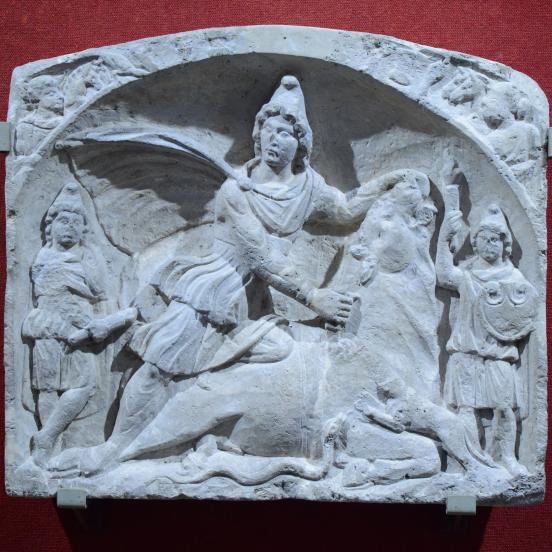Cult relief of Mithras, Sárkeszi
Besides wall fragments and other carved stones, a relief of a cult image was discovered in the outskirts of Sárkeszi, Fejér County. They are connected to the worship of the god Mithras. In the cult of Mithras, which includes Persian elements, a world view is expressed whereby the universe is controlled by the constant struggle of good and bad, light and darkness. The figure of Mithras slaying the bull embodies light defeating darkness. In the cult images depicting Mithras killing the bull, as on the Sárkeszi relief, always identical elements appear in a strictly defined arrangement. Mithras, who is wearing a Phrygian cap and eastern clothes, is slaying a white bull with his dagger, while kneeling on its back. Torch-bearers (Cautopates and Cautes), also in Eastern clothes, are standing one on each side of the relief. The god of the Sun, Sol, and the goddess of the Moon, Luna, appear above their heads, in the top corners. Their celestial chariot cannot be seen, only the heads of the horses harnessed before the chariot are represented appearing from behind the frame. On the ground various animals are attacking the bull at the bottom of the relief: a scorpion is represented at his testicles, a snake and a dog can be seen by his front legs. The cult of Mithras spread throughout the entire Roman Empire from the 2nd century, yet very little is known about its rituals because the worshippers who were initiated in this mystery religion – exclusively men – were bound by secrecy.

